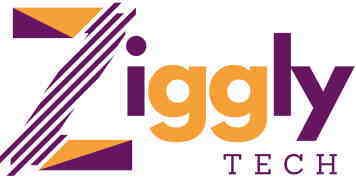If you are unable to concentrate on a single task for longer than 10-15 minutes, and if you prefer social media shorts to full-length movies, then you are almost certainly under the sway of clip thinking. The reason for its emergence lies in today’s digital culture, namely gadgets and an overabundance of information. Let’s find out what clip thinking is, where it comes from, and how to fight its manifestations. And indeed, many people notice that it’s increasingly difficult to keep attention on one source of information, for example, to study large articles, thoughtfully watch movies, create elaborative strategies for successful gambling through your BetLabel login, or read books.
What Clip Thinking Means
This term refers to a special type of mental process in which a person perceives only bright images and small amounts of information. On the one hand, it allows you to quickly switch between different topics, but on the other hand, it doesn’t allow you to dive deeply into the essence of the issue. The reasons for the phenomenon are called a large flow of daily content, dependence on gadgets, increased volume of tasks, etc.
Clip consciousness implies that a person sees the world around them in a fragmented way, as a set of unrelated phenomena. The brain demands dynamics and changing pictures, and the hand reaches for the smartphone for another batch of fast content: the more materials can be “swallowed” in a unit of time, the better.
The signs of clipped consciousness vary slightly from article to article and study to study, but if you generalize, you get a list like this:
● Problems with concentration. People are often distracted from the main task and can stretch its fulfillment for the whole day.
● Reduced analytical abilities. The clipped way of processing information doesn’t allow us to fully study the topic and build coherent logical chains. As a result, critical and abstract thinking suffers.
● Increased suggestibility. Perceiving the world in fragments, people more easily succumb to the tricks of marketers and various manipulations.
● Weakened empathy. The constant flow of diverse information and the need for a quick reaction do not leave time for experience.
● Low learnability. Developing new skills requires maximum engagement and concentration. Clip consciousness prevents this, so the productivity of study or work falls.
● Reduced communication skills. The inability to process large texts and difficulty with memorization impoverish vocabulary.
Often, clip thinking is contrasted with systemic thinking. As a result, on one side of the scale, there is the “correct” approach, which implies thoughtful analysis, gradual construction of meaning, and critical selection of facts, and on the other side, there is superficial perception, which some even equate with degradation.
What’s the Danger of Clip Thinking
The consequences of clip thinking affect all areas of human life, preventing people from acquiring new knowledge, making informed decisions, and remaining productive in their work. With children, the situation is even more serious, as it’s harder for them to assimilate large amounts of information and adapt to the environment. For this reason, many psychologists and educators try to reorganize the learning process and keep students’ attention through the interactive component. There is a feeling that mankind is dealing with a huge problem. Or is it not?
Clip Thinking: Truth or Myth?
Digitalization and the accelerated pace of life force us to perceive information quickly and fragmentarily, using different sources. Today, it’s important to grasp the essence and make a decision immediately to move on to the next task. To save time and resources, many people have started to use protective measures. They unsubscribe from unnecessary communities and newsletters, close uninteresting tabs, etc.
Content creators caught on to this trend and started to introduce microformats, trying to fit everything important into a couple of lines and keep the user’s attention. As a result, every day we have to sort through a huge number of messages and select the most important ones. Clip perception allows us not to drown in the flow of information and to process it relatively comfortably.
Although the special type of thinking is a myth, the tendency toward short types of content and superficial analysis of multiple sources does exist. However, that’s not a tragedy, but merely an adaptation mechanism and part of our evolution.
Pros of Clip Thinking
All things considered, the cons and pros of clip thinking act as two sides of the same coin. For example:
● Fragmented perception protects the brain from overload and cuts off unnecessary information. This is how people grasp the essence faster and sort through information instantly.
● Spreading attention between several subjects develops multitasking. A person can simultaneously read an article, listen to music, and get distracted by correspondence. This skill is especially useful for project managers and personal assistants.
● Instantaneous data processing enables quick responses and decision-making. This skill comes in handy for support staff, waiters, and anyone who works with a large volume of incoming information.
● The habit of analyzing all facts at once broadens your horizons and teaches you to look for non-standard solutions to problems.
To prevent the advantages of clip thinking from becoming disadvantages, it’s enough to control the amount of content you absorb, slow down in time, and periodically organize a digital detox. You can train your brain by reading books or participating in discussions. Personal interaction and meetings with loved ones can help develop empathy and communication.

0 comments